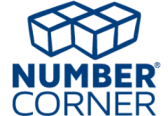Second graders add a new marker to the Calendar Grid for each day of the month. Students delve into important mathematics as they identify patterns that emerge in the markers over time. Each month also features a collection of data that students gather by taking measurements and conducting surveys. Students also build, sketch, and record arrays to match the day’s date as a way to explore addition and subtraction, as well as odd and even numbers.
Many days also feature an activity or game for strengthening students’ counting skills and computational fluency. These games and activities often incorporate visual models like ten-frames, double ten-frames, number lines, and number grids.
Content Outline
August / September
- How Many to Twenty?
- Sixty Minutes a Day
- Odd & Even
- Zero, Count On & Count Back
- The Century Counts
October
- Multiples of Three & Four
- Five Minutes a Day
- The Day’s Arrays
- Make & Break Tens
- Guess My Number
November
- Telling Time to the Quarter-Hour
- Measuring Length with Different Units
- Rows & Columns
- Doubles & Halves
- The Fifth Century
December
- Shapes & Attributes
- Student Surveys
- Rows & Columns Revisited
- Tens & Nines
- Counting Off-Decade & Off-Century
January
- Survey Data & Graphs
- Exactly Half?
- Arrays on the Hundreds Grid
- Addition & Subtraction Strategies
- Changing Endpoints
February
- Flag Fractions
- Capture the Clock
- The Base Ten Bank: Addition
- Addition Quick Facts
- The Tenth Century
March
- Mystery Shapes
- Two Quarters a Day
- The Base Ten Bank: Subtraction
- Continuing with Addition Quick Facts
- Put It on the Line
April
- Garden Fractions
- Measuring & Plotting Plant Growth
- Writing Area Equations
- More Addition Quick Facts
- Efficient Jumps of Tens & Hundreds
May / June
- Where’s Joey on the Thousand Grid?
- Measuring & Plotting Student Heights
- Arrays to Thirty-One
- Quick Facts Finale
- Adding & Subtracting Tens & Hundreds
